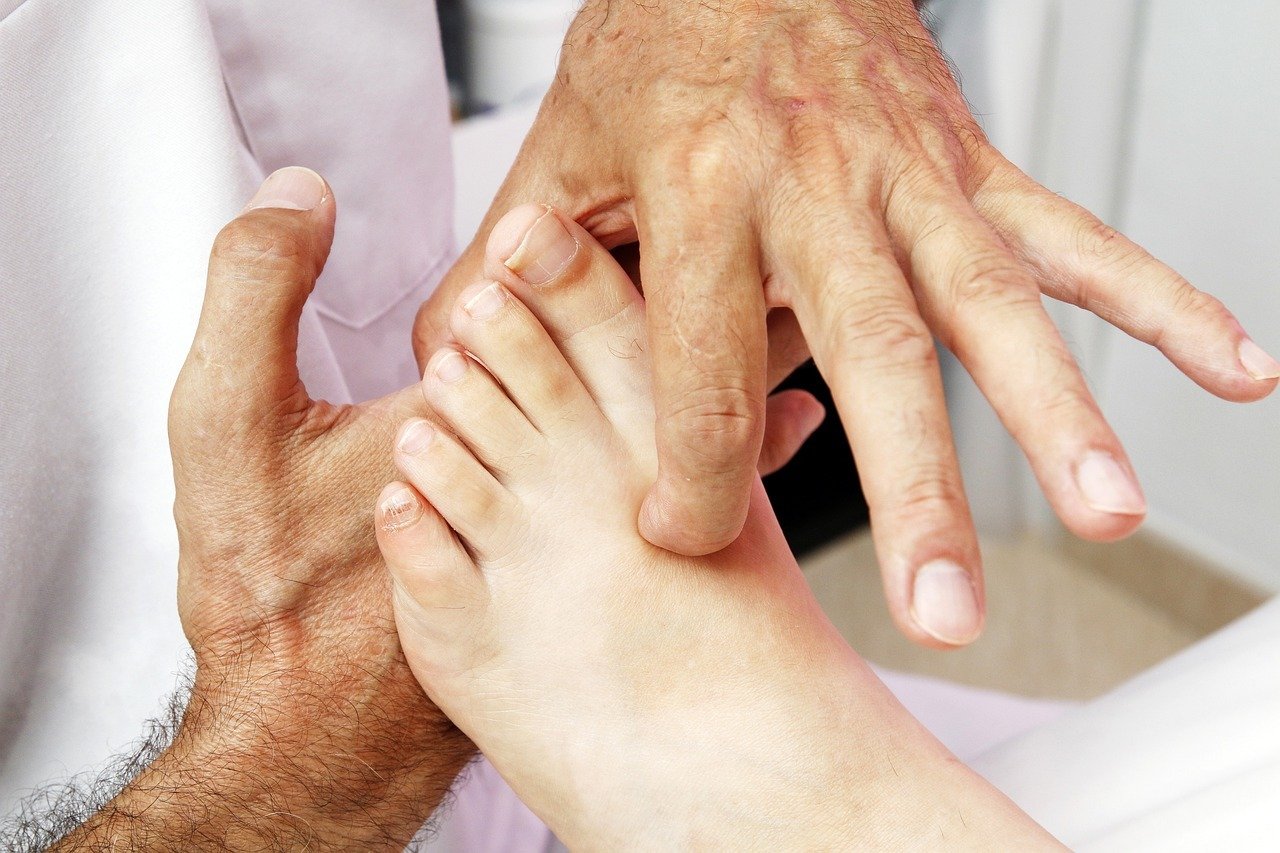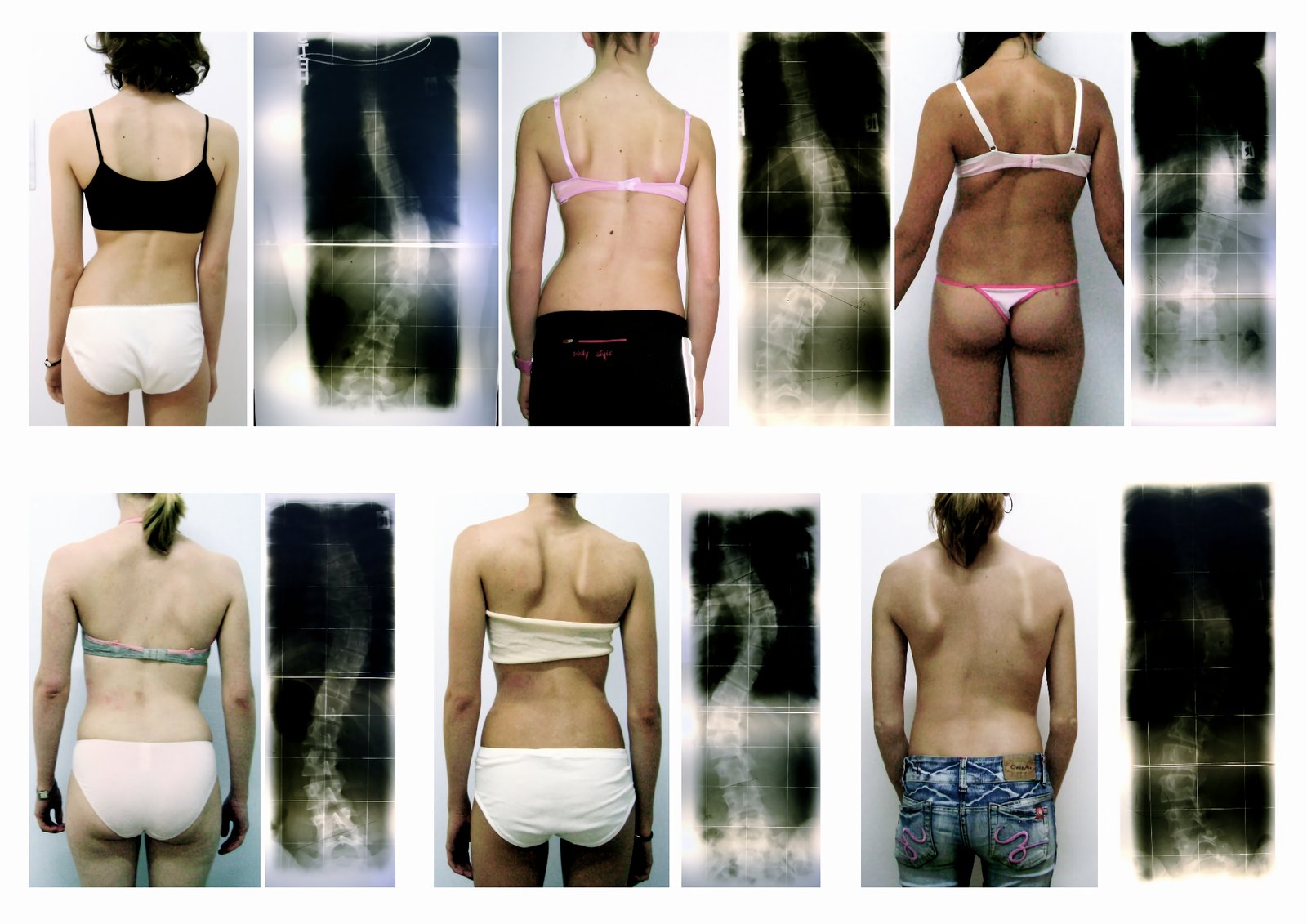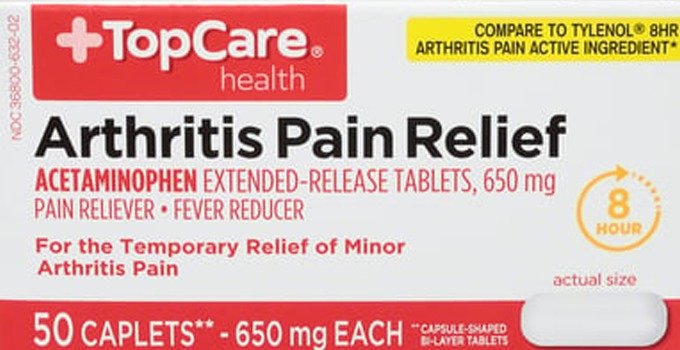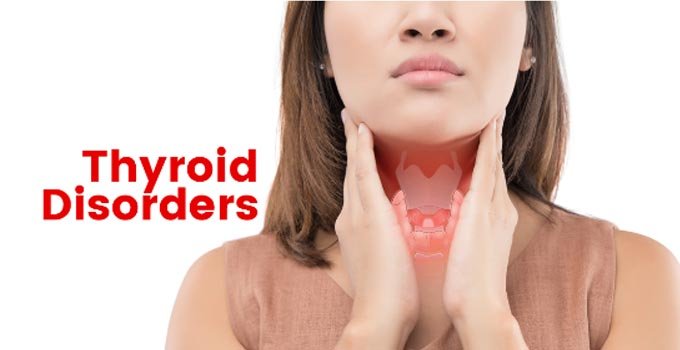Dealing with Barretts Esophagus: Diet and Treatment

Table of Contents
- Section 1: Understanding Barrett-s Esophagus
- – What is Barrett-s Esophagus?
- – Causes and Risk Factors
- – Symptoms and Diagnosis
- – Complications and Prognosis
- Section 2: Diet and Lifestyle Modifications
- – Importance of a Healthy Diet
- – Foods to Include
- – Foods to Avoid
- – Tips for Managing Symptoms
- Section 3: Medications and Medical Treatments
- – Medications for Barrett-s Esophagus
- – Acid Suppression Therapy
- – Endoscopic Treatments
- – Surgical Options
- Section 4: Alternative and Complementary Therapies
- – Herbal Remedies and Supplements
- – Acupuncture and Acupressure
- – Stress Reduction Techniques
- – Chiropractic and Physical Therapy
- Section 5: Long-Term Management and Prevention
- – Regular Monitoring and Follow-ups
- – Importance of Adherence to Treatment
- – Lifestyle Changes for Prevention
- – Support and Resources for Patients
Section 1: Understanding Barrett’s Esophagus
Barrett’s esophagus is a condition that affects the lining of the esophagus, the tube that connects the throat to the stomach. It is usually caused by long-term exposure to stomach acid, which can lead to changes in the cells of the esophageal lining. Understanding this condition is crucial for effectively managing it.
Here are some key points to help you gain a better understanding of Barrett’s esophagus:
- Causes: The primary cause of Barrett’s esophagus is gastroesophageal reflux disease (GERD), a condition in which stomach acid flows back into the esophagus. Other factors that can contribute to the development of Barrett’s esophagus include obesity, smoking, and a family history of the condition.
- Symptoms: Many people with Barrett’s esophagus do not experience any noticeable symptoms. However, some may experience symptoms similar to GERD, such as heartburn, regurgitation, difficulty swallowing, and chest pain. Regular check-ups with a healthcare professional are essential for early detection and monitoring of the condition.
- Detection: The diagnosis of Barrett’s esophagus is typically made through an upper endoscopy, a procedure in which a flexible tube with a camera is inserted through the mouth to examine the esophagus. During this procedure, small tissue samples (biopsies) may be taken for further examination under a microscope.
- Risks: Although most people with Barrett’s esophagus do not develop complications, a small percentage may develop a type of cancer called esophageal adenocarcinoma. Regular monitoring and appropriate treatment are necessary to reduce the risk of cancer development.
- Treatment: Treatment options for Barrett’s esophagus aim to manage symptoms, prevent progression to cancer, and reduce acid reflux. Lifestyle modifications, such as maintaining a healthy weight, avoiding trigger foods, elevating the head of the bed, and quitting smoking, can help alleviate symptoms. Medications to reduce stomach acid production may also be prescribed by a healthcare professional.
Gaining a thorough understanding of Barrett’s esophagus is essential in effectively managing the condition. By recognizing the causes, symptoms, detection methods, risks, and available treatments, individuals can take proactive steps to maintain their health and minimize the potential complications associated with Barrett’s esophagus.
What is Barrett’s Esophagus?
Barrett’s esophagus is a condition that affects the lining of the esophagus, the tube that connects the throat to the stomach. It is characterized by the abnormal growth of tissue in the lower portion of the esophagus, which is typically caused by long-term exposure to stomach acid and gastric juices. This condition is often associated with gastroesophageal reflux disease (GERD).
When someone has Barrett’s esophagus, the normal lining of the esophagus is replaced by a type of tissue similar to that found in the intestines. This change in the lining is called intestinal metaplasia. While Barrett’s esophagus itself doesn’t cause symptoms, it can increase the risk of developing esophageal cancer.
People who have chronic GERD symptoms, such as heartburn, regurgitation, and difficulty swallowing, are more likely to develop Barrett’s esophagus. Other risk factors include obesity, smoking, and having a family history of the condition.
Diagnosing Barrett’s esophagus usually involves an endoscopy, a procedure in which a thin tube with a camera is inserted through the mouth to examine the esophagus. During this procedure, the doctor may take a biopsy of the tissue to confirm the diagnosis.
While there is no cure for Barrett’s esophagus, treatment aims to manage symptoms and prevent complications. Lifestyle changes and dietary modifications can play a crucial role in managing the condition. Here are some tips:
- Avoid foods that trigger acid reflux, such as spicy and fatty foods, citrus fruits, caffeine, and alcohol.
- Eat smaller, more frequent meals to reduce pressure on the stomach.
- Avoid lying down or going to bed immediately after eating.
- Elevate the head of your bed to prevent stomach acid from flowing back into the esophagus during sleep.
- Quit smoking and limit alcohol consumption.
- Maintain a healthy weight to reduce pressure on the stomach.
In some cases, medications may be prescribed to reduce stomach acid production and alleviate symptoms. Regular monitoring through follow-up endoscopies is essential to detect any changes in the esophageal lining and to screen for early signs of cancer.
It’s important to work closely with your healthcare provider to develop an individualized treatment plan that addresses your specific needs. By managing symptoms and reducing the risk of complications, individuals with Barrett’s esophagus can lead healthy, fulfilling lives.
Causes and Risk Factors
Barrett’s esophagus is a condition in which the tissue lining the esophagus changes due to chronic acid reflux. The exact cause of this condition is not yet fully understood, but there are several risk factors that increase the likelihood of developing Barrett’s esophagus:
- Gastroesophageal reflux disease (GERD): Chronic acid reflux, where stomach acid flows back into the esophagus, is the primary risk factor for developing Barrett’s esophagus. The constant exposure to stomach acid irritates the esophageal lining, leading to changes in the cells over time.
- Age: Barrett’s esophagus is more commonly diagnosed in individuals over the age of 50. The risk increases with age, although it can occur in younger individuals as well.
- Gender: Men are more prone to developing Barrett’s esophagus than women. The reasons for this gender difference are still unclear.
- Obesity: Being overweight or obese increases the risk of developing Barrett’s esophagus. Excess weight puts pressure on the stomach, causing stomach acid to flow back into the esophagus more frequently.
- Smoking: Tobacco smoking weakens the lower esophageal sphincter, the muscle that prevents stomach acid from flowing back into the esophagus. This increases the risk of developing Barrett’s esophagus.
- Family history: People with a family history of Barrett’s esophagus or esophageal cancer are more likely to develop the condition themselves.
It is important to note that not everyone with chronic acid reflux will develop Barrett’s esophagus. However, it is crucial to manage acid reflux symptoms to reduce the risk of developing this condition.
Symptoms and Diagnosis
Barrett’s esophagus is a condition where the lining of the esophagus is damaged, typically due to long-term gastroesophageal reflux disease (GERD). This can lead to changes in the cells lining the esophagus, making them more similar to the cells lining the intestines. It is important to be aware of the symptoms and undergo proper diagnosis to manage this condition effectively.
Common symptoms of Barrett’s esophagus include:
- Chronic heartburn or acid reflux
- Difficulty swallowing
- Chest pain, especially after eating
- Unexplained weight loss
- Chronic cough or hoarseness
If you experience any of these symptoms, it is important to consult a healthcare professional for a proper diagnosis. They will typically perform the following diagnostic tests:
- Endoscopy: A flexible tube with a camera is inserted into the esophagus to examine the lining and take tissue samples for analysis.
- Biopsy: Tissue samples taken during an endoscopy are analyzed under a microscope to determine the presence of abnormal cells.
- Barium swallow: X-rays are taken after swallowing a barium solution, which helps visualize the esophagus and detect any abnormalities.
Early detection of Barrett’s esophagus is crucial as it can progress to a more serious condition called esophageal adenocarcinoma, a type of cancer. Regular monitoring and treatment can help prevent this progression and manage the symptoms effectively.
Complications and Prognosis
Barrett’s esophagus is a condition in which the lining of the esophagus, the tube that connects the throat to the stomach, undergoes changes. While it is considered a precancerous condition, not everyone with Barrett’s esophagus will develop esophageal cancer. However, it is essential to be aware of the potential complications and understand the prognosis.
Potential Complications:
- Esophageal Cancer: The primary concern for individuals with Barrett’s esophagus is the risk of developing esophageal cancer. Although the risk is relatively low, it is crucial to undergo regular screenings and surveillance.
- Dysplasia: Barrett’s esophagus can lead to a condition called dysplasia, which indicates abnormal cell growth. Dysplasia can be categorized as low-grade or high-grade, with high-grade dysplasia having a higher risk of progressing to cancer.
- Strictures: Over time, the constant exposure to stomach acid can cause the esophagus to narrow, leading to difficulty swallowing. This condition is known as strictures and may require medical intervention to alleviate symptoms.
- Barrett’s Ulcer: In rare cases, a Barrett’s ulcer may develop, causing pain and discomfort. These ulcers are typically treated with medication to reduce acid production and promote healing.
Prognosis:
The prognosis for individuals with Barrett’s esophagus depends on various factors, including the presence and progression of dysplasia. Regular monitoring through endoscopies and biopsies allows for the early detection of any changes in the esophageal lining. If dysplasia is identified, treatment options such as endoscopic resection, radiofrequency ablation, or surgery may be recommended to remove or destroy the abnormal cells.
It is important to note that with proper management and surveillance, the risk of developing esophageal cancer can be significantly reduced. Adhering to a recommended treatment plan, making necessary lifestyle changes, and following a healthy diet can all contribute to a better prognosis.
In conclusion, while Barrett’s esophagus is a condition that requires ongoing monitoring, it is possible to manage the associated complications and improve the prognosis. Regular screenings, timely interventions, and a proactive approach to healthcare can help individuals with Barrett’s esophagus lead a healthy and fulfilling life.
Dealing with Barrett’s Esophagus: Diet and Treatment
Barrett’s esophagus is a condition where the lining of the esophagus becomes damaged, typically due to long-term acid reflux. This damage can increase the risk of developing esophageal cancer. While there is no cure for Barrett’s esophagus, adopting a healthy diet and following proper treatment can help manage the condition and reduce the risk of complications. Here are some key points to consider:
- 1. Avoid trigger foods: Certain foods can trigger acid reflux and worsen symptoms. Common culprits include spicy foods, fatty foods, citrus fruits, chocolate, caffeine, and alcohol. It is advisable to avoid or limit these foods in your diet.
- 2. Choose the right foods: Opt for a diet rich in fruits, vegetables, whole grains, lean proteins, and low-fat dairy products. These foods can help reduce inflammation and promote overall digestive health.
- 3. Eat smaller, frequent meals: Instead of consuming large meals, try eating smaller portions throughout the day. This can help prevent excessive pressure on the esophagus and reduce acid reflux episodes.
- 4. Maintain a healthy weight: Excess weight can put pressure on the stomach, leading to acid reflux. Aim to maintain a healthy weight through regular exercise and a balanced diet.
- 5. Quit smoking: Smoking can aggravate acid reflux symptoms and increase the risk of complications. Quitting smoking is crucial for managing Barrett’s esophagus effectively.
- 6. Elevate the head of your bed: By elevating the head of your bed, you can help prevent stomach acid from flowing back into the esophagus while sleeping. Use a wedge pillow or raise the head of your bed by a few inches.
- 7. Take medications as prescribed: Your doctor may prescribe medications to reduce acid production or strengthen the esophageal lining. It is important to take these medications as directed to control symptoms and prevent further damage.
- 8. Regular check-ups: Schedule regular follow-up appointments with your doctor to monitor the progression of Barrett’s esophagus and discuss any concerns or changes in symptoms.
Remember, managing Barrett’s esophagus requires a combination of lifestyle changes, dietary modifications, and medical treatment. It is essential to work closely with your healthcare team to develop a personalized plan that suits your specific needs. With proper care and attention, you can effectively manage the condition and minimize the risk of complications.
Diet and Lifestyle Modifications
When dealing with Barrett’s esophagus, making certain changes to your diet and lifestyle can help manage symptoms and reduce the risk of complications. Here are some important modifications to consider:
- Follow a GERD-friendly diet: Avoid trigger foods that can worsen acid reflux, such as fatty and fried foods, citrus fruits, tomatoes, chocolate, caffeine, and alcohol. Instead, opt for low-fat, high-fiber foods like whole grains, fruits, vegetables, lean proteins, and low-fat dairy products.
- Eat smaller, more frequent meals: Consuming large meals can put added pressure on the lower esophageal sphincter (LES) and increase the likelihood of acid reflux. Opt for smaller, more frequent meals to ease digestion and reduce symptoms.
- Avoid late-night eating: Having a heavy meal close to bedtime can lead to acid reflux during the night. Try to finish your dinner at least two to three hours before lying down to allow for proper digestion.
- Manage body weight: Excess weight can contribute to the development and worsening of acid reflux. Maintain a healthy weight through regular exercise and a balanced diet to reduce pressure on the stomach and LES.
- Elevate the head of your bed: Raising the head of your bed by 6-8 inches can help prevent stomach acid from flowing back into the esophagus while you sleep. This can be achieved by using bed risers or placing a wedge-shaped pillow under the upper body.
- Avoid smoking and alcohol: Both smoking and alcohol can weaken the LES and increase the risk of acid reflux. Quit smoking and limit alcohol consumption to reduce symptoms and promote healing.
- Manage stress: Stress can aggravate acid reflux symptoms. Practice stress-reducing techniques such as yoga, meditation, deep breathing exercises, or engaging in hobbies you enjoy.
- Stay hydrated: Drinking plenty of water throughout the day helps maintain proper digestion and prevents dehydration. Avoid carbonated and caffeinated beverages as they can worsen acid reflux.
- Consult a registered dietitian: A registered dietitian can provide personalized dietary recommendations and guidance to manage Barrett’s esophagus effectively. They can help create a meal plan that suits your specific needs and preferences.
Remember, it’s crucial to consult with your healthcare provider or gastroenterologist before making any significant changes to your diet or lifestyle. They will provide you with tailored advice and ensure that your treatment plan aligns with your individual condition.
Importance of a Healthy Diet
A healthy diet plays a crucial role in managing and treating Barrett’s esophagus. This condition is characterized by the presence of abnormal cells in the lining of the lower part of the esophagus, which can lead to an increased risk of esophageal cancer. While there is no specific diet that can cure Barrett’s esophagus, making certain dietary changes can help alleviate symptoms, reduce inflammation, and promote overall well-being.
Here are some reasons why a healthy diet is important for individuals with Barrett’s esophagus:
- Reducing acid reflux: Consuming a diet that is low in fat, spicy foods, and acidic foods can help minimize acid reflux, a common symptom of Barrett’s esophagus. Avoiding triggers such as citrus fruits, tomatoes, caffeine, and carbonated beverages can alleviate discomfort and reduce the risk of further damage to the esophageal lining.
- Promoting weight management: Maintaining a healthy weight is essential for managing Barrett’s esophagus. Excess weight puts pressure on the stomach, which can lead to increased acid reflux. A well-balanced diet that includes fruits, vegetables, lean proteins, whole grains, and limited sugar and saturated fats can help achieve and maintain a healthy weight.
- Increasing fiber intake: Including high-fiber foods such as whole grains, legumes, fruits, and vegetables in your diet can help regulate bowel movements and prevent constipation. This can reduce the strain on the esophagus during digestion and minimize discomfort.
- Ensuring adequate nutrient intake: Consuming a variety of nutrient-rich foods can provide the body with essential vitamins, minerals, and antioxidants. These nutrients support the immune system, promote healing, and reduce inflammation in the esophagus. Incorporate foods like leafy greens, berries, nuts, seeds, and fish into your diet to optimize your nutrient intake.
While adopting a healthy diet is important, it is also essential to consult with a healthcare professional or registered dietitian who can provide personalized dietary recommendations based on your specific needs and medical condition. They can help you create a well-balanced meal plan that suits your individual requirements and supports your overall health and well-being.
Foods to Include
When dealing with Barrett’s Esophagus, it is important to focus on a healthy diet that can help manage symptoms and promote healing. Here are some foods that you should include in your diet:
- Fruits and Vegetables: Aim to consume a variety of fruits and vegetables as they are rich in vitamins, minerals, and antioxidants. Opt for non-citrus fruits like apples, bananas, and melons. Leafy greens, broccoli, carrots, and sweet potatoes are excellent choices for vegetables.
- Whole Grains: Incorporate whole grains such as oats, brown rice, quinoa, and whole wheat bread into your meals. These provide fiber and nutrients while being gentle on the digestive system.
- Lean Proteins: Include lean sources of protein in your diet, such as skinless poultry, fish, tofu, and legumes. These foods are easier to digest and less likely to trigger acid reflux.
- Healthy Fats: Choose foods rich in healthy fats, such as avocados, nuts, seeds, and olive oil. These fats can help reduce inflammation and promote healing in the esophagus.
- Low-Fat Dairy: Opt for low-fat dairy products like skim milk, yogurt, and cottage cheese. These provide essential nutrients without adding excessive fat to your diet.
- Ginger and Turmeric: Incorporate ginger and turmeric into your meals or consume them as herbal teas. These spices have anti-inflammatory properties and can help soothe the digestive system.
In addition to including these foods, it is essential to make some lifestyle changes to manage Barrett’s Esophagus effectively. Avoid trigger foods such as spicy or acidic foods, caffeine, carbonated beverages, and alcohol. Opt for smaller, more frequent meals to prevent overeating and minimize the pressure on the esophagus. It is also advisable to maintain a healthy weight and avoid smoking.
Remember to consult with your healthcare provider or a registered dietitian to create a personalized diet plan that suits your specific needs and medical condition.
Foods to Avoid
When dealing with Barrett’s Esophagus, it is important to follow a diet that helps alleviate symptoms and reduces the risk of complications. Here are some foods to avoid:
- Acidic Foods: Avoid foods that are highly acidic such as citrus fruits, tomatoes, and vinegar. These foods can irritate the esophagus and worsen symptoms.
- Spicy Foods: Spicy foods like chili peppers, hot sauce, and curry can trigger heartburn and acid reflux, leading to discomfort and irritation.
- Fatty Foods: High-fat foods like fried foods, greasy snacks, and fatty meats can slow down digestion and increase the risk of acid reflux.
- Caffeine and Carbonated Drinks: Coffee, tea, soda, and other caffeinated beverages can relax the lower esophageal sphincter (LES), allowing stomach acid to flow back into the esophagus.
- Alcohol and Tobacco: Both alcohol and tobacco can weaken the LES and increase acid production, leading to more severe symptoms.
- Chocolate and Mint: Chocolate contains caffeine and can relax the LES, while mint can also relax the LES and increase acid reflux symptoms.
- Onions and Garlic: These foods can cause heartburn and worsen acid reflux for some individuals.
- Processed Foods: Processed foods, such as fast food, packaged snacks, and pre-packaged meals, often contain high levels of fat, salt, and preservatives that can trigger acid reflux.
It is important to note that triggers can vary from person to person, so it is essential to keep a food diary and take note of any foods that seem to worsen your symptoms. By avoiding these trigger foods, you can help manage your Barrett’s Esophagus and reduce the risk of complications.
Tips for Managing Symptoms
Barrett’s esophagus is a condition where the lining of the esophagus is damaged, often due to long-term acid reflux. While there is no cure for Barrett’s esophagus, certain lifestyle changes and treatments can help manage its symptoms. Here are some tips to help you deal with the condition effectively:
- 1. Follow a healthy diet: Eating a well-balanced diet can help reduce symptoms. Avoid foods that trigger acid reflux, such as spicy and fatty foods, caffeine, alcohol, and carbonated drinks. Opt for smaller, more frequent meals and include high-fiber foods like fruits, vegetables, and whole grains.
- 2. Maintain a healthy weight: Excess weight can put pressure on your stomach, leading to acid reflux. Engage in regular exercise and adopt a healthy lifestyle to manage your weight and reduce symptoms.
- 3. Elevate the head of your bed: Raising the head of your bed by about 6-8 inches can help prevent stomach acid from flowing back into your esophagus while you sleep. This can reduce nighttime symptoms and promote better sleep.
- 4. Quit smoking: Smoking can worsen acid reflux symptoms and increase the risk of complications. Quitting smoking not only benefits your overall health but also helps manage Barrett’s esophagus symptoms.
- 5. Manage stress: Stress can trigger or worsen acid reflux. Find stress management techniques that work for you, such as exercise, meditation, or engaging in hobbies you enjoy. Prioritizing self-care and relaxation can help alleviate symptoms.
- 6. Take medication as prescribed: Your doctor may prescribe medications to reduce acid production or heal any existing damage to your esophagus. It is important to take these medications as prescribed and follow up with your healthcare provider regularly.
- 7. Regularly monitor your condition: Regular check-ups and endoscopies are essential to monitor the progression of Barrett’s esophagus and detect any changes or complications. Stay in touch with your doctor and follow their recommendations for follow-up care.
While these tips can help manage the symptoms of Barrett’s esophagus, it is crucial to work closely with your healthcare provider to develop an individualized treatment plan. They can provide personalized guidance and monitor your condition to ensure optimal management and minimize the risk of complications.
Dealing with Barrett’s Esophagus: Diet and Treatment
Barrett’s Esophagus is a condition in which the lining of the esophagus is damaged, usually by acid reflux. It is a precancerous condition, meaning it increases the risk of developing esophageal cancer. Managing Barrett’s Esophagus involves making certain lifestyle changes and following a specific diet to reduce symptoms and minimize the risk of complications.
Dietary Recommendations
While there is no specific diet that can cure Barrett’s Esophagus, following these dietary recommendations can help alleviate symptoms and promote overall digestive health:
- Avoid Trigger Foods: Certain foods can trigger acid reflux and worsen symptoms. Common trigger foods include spicy, fatty, and acidic foods, as well as chocolate, caffeine, and carbonated beverages. It is best to identify and avoid your personal trigger foods.
- Eat Smaller, Frequent Meals: Consuming smaller meals throughout the day instead of large, heavy meals can help reduce the pressure on the lower esophageal sphincter (LES) and decrease the likelihood of acid reflux. Be sure to eat slowly and chew food thoroughly.
- Incorporate High-Fiber Foods: Foods high in fiber, such as whole grains, fruits, vegetables, and legumes, can help regulate digestion and prevent constipation. This can reduce the risk of acid reflux and promote a healthy gastrointestinal system.
- Avoid Late-Night Eating: Eating close to bedtime can increase the risk of acid reflux. Try to finish your last meal or snack at least two to three hours before lying down to allow for proper digestion.
Treatment Options
Alongside dietary changes, your healthcare provider may recommend additional treatment options to manage Barrett’s Esophagus. These could include:
- Medications: Over-the-counter antacids or prescription medications such as proton pump inhibitors (PPIs) may be recommended to reduce acid production and alleviate symptoms.
- Endoscopic Procedures: In some cases, your doctor may perform an endoscopy to remove abnormal cells or tissues in the esophagus. This procedure can help reduce the risk of cancer development.
- Regular Monitoring: Since Barrett’s Esophagus is a precancerous condition, regular monitoring through endoscopies and biopsies is crucial to detect any changes or progression.
It is important to work closely with your healthcare provider to develop a personalized treatment plan that suits your specific needs. By following a healthy diet, making lifestyle changes, and adhering to the recommended treatment options, you can effectively manage Barrett’s Esophagus and reduce the risk of complications.
Section 3: Medications and Medical Treatments
When it comes to managing Barrett’s esophagus, diet modifications alone may not be sufficient. In some cases, medications and medical treatments are necessary to control symptoms and reduce the risk of complications. Here are some common options:
- Proton Pump Inhibitors (PPIs): These medications are commonly prescribed to reduce the production of stomach acid. By lowering acid levels, PPIs can help alleviate symptoms such as heartburn and reflux. They also promote the healing of damaged esophageal tissue.
- H2 Blockers: Similar to PPIs, H2 blockers work by reducing the production of stomach acid. They can be used as an alternative or in combination with PPIs to manage symptoms.
- Antacids: Over-the-counter antacids can provide temporary relief by neutralizing stomach acid. However, they are not as effective in long-term management as PPIs or H2 blockers.
- Endoscopic Therapy: In some cases, your healthcare provider may recommend endoscopic treatments to remove abnormal cells or precancerous tissue from the esophagus. This can help reduce the risk of developing esophageal cancer.
- Surgical Intervention: In rare and severe cases, surgery may be necessary to remove the affected portion of the esophagus. This option is typically considered when other treatments have not been successful or when cancer has already developed.
It is important to note that the choice of medication or medical treatment depends on various factors, including the severity of Barrett’s esophagus, the presence of complications, and individual patient characteristics. Your healthcare provider will assess your specific situation and recommend the most suitable approach for you.
Remember, medication and medical treatments should always be used in conjunction with lifestyle modifications, such as adhering to a healthy diet and maintaining a healthy weight. Regular follow-up appointments with your healthcare provider are crucial to monitor the progression of Barrett’s esophagus and ensure the effectiveness of the chosen treatment plan.
Medications for Barrett’s Esophagus
If you have been diagnosed with Barrett’s esophagus, your doctor may prescribe medications to help manage the condition and reduce the risk of complications. These medications can help alleviate symptoms, control acid reflux, and prevent further damage to the esophagus. Here are some common medications used in the treatment of Barrett’s esophagus:
- Proton Pump Inhibitors (PPIs): PPIs are a type of medication that reduces the production of stomach acid. They are usually the first line of treatment for Barrett’s esophagus. By decreasing acid levels, PPIs can help relieve heartburn, improve healing of the esophagus, and reduce the risk of cancer development.
- H2 Blockers: H2 blockers are another type of medication that helps reduce stomach acid production. They work by blocking histamine receptors in the stomach, thereby decreasing acid secretion. H2 blockers can provide relief from heartburn and other symptoms associated with Barrett’s esophagus.
- Antacids: Antacids are over-the-counter medications that neutralize stomach acid. While they provide temporary relief from heartburn, they are not as effective as PPIs or H2 blockers in controlling acid reflux in Barrett’s esophagus. However, they can be used as a supplemental treatment or for milder cases.
- Prokinetics: Prokinetic drugs help improve the movement of the digestive tract, including the esophagus. They can help reduce acid reflux and improve symptoms. However, prokinetics are not commonly prescribed for Barrett’s esophagus and may have side effects, so they are usually used as a last resort.
- Aspirin and Nonsteroidal Anti-inflammatory Drugs (NSAIDs): Some studies suggest that regular use of aspirin or NSAIDs may help reduce the risk of esophageal cancer in people with Barrett’s esophagus. However, before taking these medications, it is important to consult with your doctor to assess the potential benefits and risks.
It is important to note that medications alone may not be sufficient to manage Barrett’s esophagus. Lifestyle changes, such as maintaining a healthy weight, avoiding trigger foods, quitting smoking, and elevating the head of your bed, are also crucial in reducing symptoms and preventing complications. Always consult with your healthcare provider to determine the best treatment plan for your specific condition.
Acid Suppression Therapy
One of the primary treatment options for managing Barrett’s esophagus is acid suppression therapy. This approach aims to reduce the amount of acid produced in the stomach, which can help alleviate symptoms and prevent further damage to the esophagus. There are several types of acid suppression medications available, and they can be used alone or in combination to achieve the best results.
Here are some common acid suppression medications:
- Proton Pump Inhibitors (PPIs): These medications work by blocking the enzyme responsible for acid production in the stomach. They are highly effective in reducing acid levels and promoting healing of the esophagus. Examples of PPIs include omeprazole, lansoprazole, and esomeprazole.
- H2 Receptor Blockers: These medications work by reducing the production of acid in the stomach. They are not as potent as PPIs but can still provide relief for mild cases of Barrett’s esophagus. Examples of H2 receptor blockers include ranitidine and famotidine.
- Antacids: These are over-the-counter medications that provide short-term relief by neutralizing stomach acid. They are not as effective as PPIs or H2 receptor blockers in managing Barrett’s esophagus but can be used as adjunctive therapy.
It’s important to note that acid suppression therapy is not a cure for Barrett’s esophagus but rather a way to manage symptoms and reduce the risk of complications. It is usually recommended to take these medications on a long-term basis to maintain control over acid production.
In addition to acid suppression therapy, lifestyle modifications can also play a crucial role in managing Barrett’s esophagus. These may include:
- Adopting a healthy diet that is low in acidic and spicy foods
- Avoiding large meals and eating smaller, more frequent meals
- Avoiding lying down or bending over immediately after eating
- Quitting smoking
- Maintaining a healthy weight
- Elevating the head of the bed while sleeping
It is important to consult with a healthcare professional to determine the most appropriate acid suppression therapy and lifestyle modifications for your specific case of Barrett’s esophagus. Regular monitoring and follow-up appointments are also essential to assess the effectiveness of the treatment and make any necessary adjustments.
Endoscopic Treatments
In addition to dietary and lifestyle changes, there are various endoscopic treatments available for managing Barrett’s esophagus. These procedures aim to remove or destroy the abnormal cells in the esophagus, reducing the risk of cancer development. Here are some commonly used endoscopic treatments:
- Radiofrequency ablation (RFA): This technique uses heat energy to destroy the abnormal cells in the esophagus. A thin, flexible tube with an electrode at the end is passed through the mouth and into the esophagus. The electrode delivers controlled heat energy to the targeted areas, effectively destroying the abnormal cells. RFA is a safe and effective treatment option with minimal side effects.
- Cryotherapy: This procedure involves freezing the abnormal cells using liquid nitrogen or nitrous oxide. A specialized catheter is inserted into the esophagus, and the freezing agent is sprayed onto the targeted areas. The extreme cold temperatures destroy the abnormal cells, allowing healthy cells to grow in their place. Cryotherapy is a relatively new technique and may have some associated risks.
- Endoscopic mucosal resection (EMR): EMR is a procedure used to remove abnormal tissue or early-stage cancer from the lining of the esophagus. A specialized endoscope is passed through the mouth and into the esophagus. The abnormal tissue is then carefully removed using a snare or other specialized instruments. EMR is commonly used for larger or more advanced areas of abnormal tissue.
- Photodynamic therapy (PDT): PDT involves the use of a photosensitizing agent and a special light source to destroy abnormal cells. The photosensitizing agent is injected into the bloodstream and absorbed by the abnormal cells. A specific wavelength of light is then applied to activate the agent, resulting in the destruction of the targeted cells. PDT is generally used for more advanced cases of Barrett’s esophagus.
These endoscopic treatments are usually performed on an outpatient basis and may require multiple sessions to achieve the desired results. The choice of treatment depends on the extent of the Barrett’s esophagus and the individual’s overall health. It is essential to discuss the available options with a healthcare professional to determine the most suitable treatment plan.
It is important to note that while these endoscopic treatments can effectively remove or destroy abnormal cells, regular follow-up examinations are necessary to monitor the condition and detect any recurrence. Additionally, maintaining a healthy lifestyle and adhering to dietary recommendations are crucial for managing Barrett’s esophagus and reducing the risk of cancer development.
Surgical Options
While lifestyle changes and medication can often help manage the symptoms of Barrett’s esophagus, in some cases, surgical intervention may be necessary. Surgical options are typically considered when other treatments have been ineffective or when there is a high risk of cancer development. Here are some surgical options that may be recommended:
- Radiofrequency ablation (RFA): This is a common treatment for Barrett’s esophagus. During RFA, a thin tube with an electrode at the end is inserted into the esophagus. The electrode delivers radiofrequency energy to remove the abnormal cells and promote the growth of healthy tissue. RFA can be performed during an endoscopy procedure.
- Endoscopic mucosal resection (EMR): EMR involves removing abnormal tissue from the esophagus using a specialized endoscope. This procedure is often recommended for early-stage Barrett’s esophagus or when dysplasia is present. EMR can help prevent the progression of the condition to cancer.
- Laparoscopic anti-reflux surgery: Also known as fundoplication, this surgery is performed to treat acid reflux and prevent stomach acid from flowing back into the esophagus. It may be recommended for individuals with severe acid reflux symptoms and Barrett’s esophagus.
- Esophagectomy: In rare cases where Barrett’s esophagus has progressed to high-grade dysplasia or cancer, surgical removal of the esophagus may be necessary. This procedure is called esophagectomy and is typically performed using minimally invasive techniques.
It’s important to note that surgical options are typically considered as a last resort and are only recommended when the risks of the condition outweigh the potential risks of surgery. The choice of surgical procedure depends on various factors, including the severity of Barrett’s esophagus, the presence of dysplasia or cancer, and the overall health of the individual.
Before deciding on any surgical option, it is crucial to consult with a gastroenterologist or a surgeon who specializes in treating Barrett’s esophagus. They will evaluate your specific case and recommend the most appropriate treatment plan for you.
Dealing with Barrett’s Esophagus: Diet and Treatment
Barrett’s esophagus is a condition that occurs when the lining of the esophagus is damaged by stomach acid and tissue changes occur. It is commonly associated with gastroesophageal reflux disease (GERD) and can increase the risk of developing esophageal cancer. While there is no cure for Barrett’s esophagus, certain lifestyle changes and treatments can help manage the symptoms and reduce the risk of complications.
One of the most important aspects of managing Barrett’s esophagus is adopting a healthy diet. Here are some dietary guidelines to consider:
- Avoid trigger foods: Certain foods can trigger acid reflux and worsen symptoms. These may include citrus fruits, tomatoes, chocolate, spicy foods, fatty and fried foods, and caffeine. It is best to limit or avoid these foods to minimize acid reflux.
- Eat smaller, frequent meals: Consuming large meals can put pressure on the stomach and increase the likelihood of acid reflux. Opt for smaller, more frequent meals throughout the day to reduce the strain on the esophagus.
- Choose low-acid foods: Opt for foods that are less acidic, such as lean proteins like chicken and fish, whole grains, non-citrus fruits, and vegetables. These foods are less likely to trigger acid reflux and are generally healthier for the body.
- Avoid late-night eating: Eating close to bedtime can increase the risk of acid reflux. It is recommended to have your last meal at least two to three hours before going to bed to allow for proper digestion.
- Stay hydrated: Drinking enough water can help dilute stomach acid and reduce the risk of acid reflux. Aim to drink plenty of water throughout the day and avoid carbonated and caffeinated beverages.
In addition to dietary changes, there are various treatment options available for managing Barrett’s esophagus:
- Medications: Your doctor may prescribe medications to reduce the production of stomach acid or to strengthen the lower esophageal sphincter, which helps prevent acid reflux.
- Endoscopic therapies: In some cases, endoscopic procedures may be performed to remove abnormal tissue or to prevent further damage to the esophagus.
- Surgery: Surgical intervention may be recommended for individuals with severe or persistent symptoms. This may involve tightening the lower esophageal sphincter or removing a portion of the esophagus.
- Regular monitoring: Since Barrett’s esophagus increases the risk of esophageal cancer, regular monitoring through endoscopies and biopsies is crucial. This allows for early detection and treatment of any precancerous or cancerous cells.
It is important to consult with a healthcare professional for an accurate diagnosis and to develop an individualized treatment plan based on your specific condition and needs. By following a healthy diet and undergoing appropriate treatments, you can effectively manage Barrett’s esophagus and reduce the risk of complications.
Section 4: Alternative and Complementary Therapies
While conventional medical treatments are essential for managing Barrett’s esophagus, some individuals may also find relief and support from alternative and complementary therapies. These therapies can help alleviate symptoms, promote overall well-being, and enhance the effectiveness of medical treatments. It is important to note that alternative therapies should not replace medical advice or treatment, but rather be used as a supplementary approach.
Here are some alternative and complementary therapies that may be beneficial for individuals with Barrett’s esophagus:
- Acupuncture: This ancient Chinese practice involves the insertion of thin needles into specific points of the body to restore balance and alleviate symptoms. Acupuncture has been shown to help reduce acid reflux and improve digestion, providing relief for individuals with Barrett’s esophagus.
- Herbal remedies: Certain herbs and supplements may have soothing effects on the digestive system and help reduce inflammation in the esophagus. Slippery elm, chamomile, and marshmallow root are examples of herbs that can be brewed into teas or taken as supplements to ease symptoms.
- Meditation and relaxation techniques: Stress can worsen symptoms of Barrett’s esophagus, so incorporating relaxation techniques into daily life can be beneficial. Practices such as meditation, deep breathing exercises, and yoga can help reduce stress levels and promote overall well-being.
- Dietary changes: Certain foods can trigger acid reflux and worsen symptoms of Barrett’s esophagus. It is important to identify and avoid these trigger foods. Additionally, incorporating foods that are known to be soothing to the digestive system, such as ginger, aloe vera, and probiotic-rich foods, can be helpful.
- Chiropractic care: Some individuals with Barrett’s esophagus may experience misalignments in the spine that can contribute to digestive issues. Chiropractic adjustments can help realign the spine and improve overall digestive function.
It is crucial to consult with a healthcare professional before starting any alternative or complementary therapy. They can provide guidance on the safety and efficacy of these treatments and ensure they do not interfere with any prescribed medications or medical treatments.
Remember, while alternative and complementary therapies can offer additional support, they should not replace medical interventions. Working in conjunction with your healthcare team and following their recommendations is key to effectively managing Barrett’s esophagus.
Herbal Remedies and Supplements
When it comes to managing Barrett’s esophagus, a condition characterized by changes in the lining of the esophagus, diet and treatment play a crucial role. Alongside conventional medical interventions, herbal remedies and supplements can provide additional support in reducing symptoms and promoting the healing process. Here are some natural options to consider:
- Aloe vera: Known for its soothing properties, aloe vera can help alleviate discomfort caused by acid reflux and inflammation in the esophagus. Consider drinking aloe vera juice or taking aloe vera supplements after consulting with your healthcare provider.
- Marshmallow root: This herb contains mucilage, which forms a protective layer on the esophagus, reducing irritation and promoting healing. You can consume marshmallow root as a tea or take it in capsule or tincture form.
- Slippery elm: Similar to marshmallow root, slippery elm also contains mucilage that coats the lining of the esophagus. This can help relieve symptoms such as heartburn and improve overall digestion. Look for slippery elm lozenges or powder to mix with water.
- Ginger: Known for its anti-inflammatory properties, ginger can help reduce inflammation in the esophagus and alleviate symptoms of Barrett’s esophagus. Consider drinking ginger tea or taking ginger capsules, which are available in health food stores.
- Probiotics: These beneficial bacteria can help maintain a healthy digestive system and reduce the risk of complications associated with Barrett’s esophagus. Look for probiotic supplements that contain strains such as Lactobacillus acidophilus and Bifidobacterium bifidum.
It is important to note that while herbal remedies and supplements can provide relief, they should not replace conventional medical treatment. Always consult with your healthcare provider before starting any new herbal remedy or supplement, as they can interact with other medications or have potential side effects.
Remember, adopting a healthy diet and lifestyle, along with medical guidance, is essential in managing Barrett’s esophagus effectively. Incorporating these herbal remedies and supplements can be a valuable addition to your overall treatment plan.
Acupuncture and Acupressure for Dealing with Barrett’s Esophagus: Diet and Treatment
Barrett’s esophagus is a condition characterized by the lining of the esophagus changing to resemble the lining of the intestines. It is often caused by chronic acid reflux, and if left untreated, it can increase the risk of developing esophageal cancer. While diet and medication play crucial roles in managing Barrett’s esophagus, alternative therapies like acupuncture and acupressure can also be beneficial in relieving symptoms and supporting overall well-being.
Acupuncture is a traditional Chinese medicine practice that involves inserting thin needles into specific points on the body. It is believed to help regulate the flow of energy, known as Qi, throughout the body. Acupuncture can be used as a complementary therapy for Barrett’s esophagus to help reduce symptoms such as heartburn, acid reflux, and inflammation in the esophagus.
Acupressure, on the other hand, involves applying pressure to specific acupoints using fingers, thumbs, or specialized tools. It can be an effective self-care technique for managing symptoms associated with Barrett’s esophagus. Here are some acupressure points that may help:
- Pericardium 6 (P6): Located on the inner side of the forearm, about three finger-widths above the wrist crease. Stimulating this point may help relieve nausea and reflux symptoms.
- Stomach 36 (ST36): Situated on the lower leg, four finger-widths below the kneecap and one finger-width towards the outside of the leg. This point is believed to support digestion and strengthen the stomach.
- Ren 12: Found on the midline of the abdomen, about four finger-widths above the belly button. Stimulating this point may help alleviate heartburn and promote better digestion.
It is important to note that acupuncture and acupressure should be used as adjunct therapies alongside medical treatment and dietary changes. Consulting with a licensed acupuncturist or a qualified healthcare professional experienced in Chinese medicine is recommended to ensure safe and effective treatment.
While acupuncture and acupressure can offer relief, it is crucial to follow a well-balanced diet to manage Barrett’s esophagus effectively. Focus on incorporating the following into your diet:
- Fiber-rich foods: Whole grains, fruits, vegetables, and legumes can help regulate digestion and prevent constipation.
- Lean proteins: Opt for skinless poultry, fish, tofu, and beans to minimize acid reflux symptoms.
- Low-fat options: Choose low-fat dairy products and limit high-fat foods to reduce the risk of acid reflux.
- Anti-inflammatory foods: Include foods like ginger, turmeric, green leafy vegetables, and fatty fish, which can help reduce inflammation in the esophagus.
- Avoid trigger foods: Spicy foods, citrus fruits, alcohol, caffeine, and carbonated beverages can aggravate acid reflux symptoms and should be limited or avoided.
Remember to consult with a gastroenterologist or a registered dietitian to create a personalized diet plan that suits your specific needs and condition.
In conclusion, acupuncture and acupressure can be valuable adjunct therapies for managing Barrett’s esophagus, helping to alleviate symptoms and support overall well-being. Combined with appropriate medical treatment and a well-balanced diet, these alternative therapies can contribute to a comprehensive approach in managing this condition.
Stress Reduction Techniques
Dealing with Barrett’s Esophagus can be a challenging journey, both physically and emotionally. Stress is known to exacerbate symptoms and can negatively impact your overall well-being. Therefore, incorporating stress reduction techniques into your daily routine is crucial for managing this condition effectively. Here are some techniques that can help:
- Deep Breathing: Practice deep breathing exercises to calm your mind and relax your body. Take slow, deep breaths, and focus on your breath as it fills your lungs and then slowly exhale.
- Meditation: Engage in regular meditation sessions to promote relaxation and reduce stress. Find a quiet and comfortable space, close your eyes, and focus on your breath or a calming visualization.
- Yoga: Incorporate gentle yoga poses into your daily routine. Yoga helps release tension in the body and promotes a sense of inner peace and well-being.
- Exercise: Engaging in regular physical activity can help reduce stress levels. Find an exercise that you enjoy, such as walking, swimming, or cycling, and make it a part of your routine.
- Journaling: Writing down your thoughts, feelings, and experiences in a journal can be a therapeutic way to release stress. It allows you to reflect on your emotions and gain a better understanding of yourself.
- Social Support: Seek support from your friends, family, or support groups. Talking to others who are going through similar experiences can provide comfort and guidance.
- Relaxation Techniques: Explore various relaxation techniques like progressive muscle relaxation or guided imagery to help calm your mind and relieve stress.
Remember, stress reduction techniques may not completely eliminate the challenges of dealing with Barrett’s Esophagus, but they can significantly improve your quality of life. Incorporate these techniques into your daily routine and find what works best for you. It is essential to consult with your healthcare provider before starting any new stress reduction techniques or making significant changes to your lifestyle.
Chiropractic and Physical Therapy
When it comes to managing Barrett’s esophagus, diet and treatment play a crucial role in reducing symptoms and improving overall well-being. While medical interventions are typically the primary focus, complementary therapies like chiropractic and physical therapy can offer additional benefits.
Chiropractic care involves the manipulation of the spine and other joints to restore proper alignment and function. It aims to alleviate pain, improve mobility, and enhance the body’s natural healing abilities. For individuals with Barrett’s esophagus, chiropractic adjustments may help alleviate symptoms such as neck and back pain, muscle tension, and digestive discomfort.
Physical therapy, on the other hand, focuses on a range of exercises and techniques to strengthen muscles, improve flexibility, and enhance overall physical function. It can help individuals with Barrett’s esophagus address issues related to posture, muscle imbalances, and mobility restrictions. Physical therapists may also provide guidance on proper body mechanics and ergonomics to minimize strain on the esophagus and reduce the risk of complications.
Here are some potential benefits of incorporating chiropractic and physical therapy into your Barrett’s esophagus management plan:
- Pain relief: Chiropractic adjustments and physical therapy techniques can help alleviate discomfort and pain associated with Barrett’s esophagus, such as muscle tension and postural strain.
- Improved mobility: Both chiropractic care and physical therapy can help enhance joint mobility and flexibility, allowing for better movement and reduced stiffness.
- Enhanced digestion: Chiropractic adjustments may help improve nerve function and blood flow to the digestive organs, potentially leading to improved digestion and reduced acid reflux symptoms.
- Stress reduction: Chiropractic care and physical therapy can promote relaxation and reduce stress, which can positively impact overall well-being and potentially decrease the frequency and severity of Barrett’s esophagus symptoms.
It’s important to note that chiropractic care and physical therapy should be used as complementary therapies alongside medical treatment. Always consult with your healthcare provider before starting any new treatment or therapy, and ensure that your chiropractor or physical therapist is aware of your Barrett’s esophagus diagnosis and any specific considerations related to your condition.
Dealing with Barretts Esophagus: Diet and Treatment
Barrett’s esophagus is a condition in which the lining of the esophagus becomes damaged, usually as a result of long-term acid reflux. It is important to manage this condition to prevent further complications such as esophageal cancer. Along with medical treatment, adopting a suitable diet can play a significant role in managing Barrett’s esophagus. Here are some dietary guidelines and treatment options to consider:
Dietary Guidelines:
- Avoid Trigger Foods: Certain foods can exacerbate acid reflux and should be avoided. These include spicy foods, citrus fruits, tomatoes, chocolate, caffeine, and carbonated beverages.
- Eat Smaller Meals: Consuming smaller, more frequent meals can help reduce pressure on the esophagus and minimize acid reflux symptoms.
- Choose Low-Acid Foods: Opt for foods that are less acidic, such as lean proteins, whole grains, non-citrus fruits, and vegetables.
- Stay Hydrated: Drink plenty of water throughout the day to help dilute stomach acid and maintain proper digestion.
- Avoid Late-Night Eating: Refrain from eating at least two to three hours before bedtime to allow for proper digestion and minimize acid reflux.
Treatment Options:
In addition to dietary changes, your healthcare provider may recommend the following treatment options:
- Medications: Over-the-counter antacids, H2 blockers, and proton pump inhibitors can help reduce acid production and relieve symptoms.
- Lifestyle Modifications: Elevating the head of your bed, quitting smoking, losing weight (if overweight), and avoiding tight-fitting clothing can all help alleviate symptoms.
- Endoscopic Procedures: In some cases, your doctor may recommend endoscopic treatments to remove abnormal tissue or perform a procedure called radiofrequency ablation to destroy precancerous cells.
- Regular Monitoring: It is crucial to undergo regular screenings and endoscopies to monitor the progress of Barrett’s esophagus and detect any potential complications.
Remember, it is essential to consult with your healthcare provider for a personalized treatment plan that suits your specific condition. Understanding and implementing an appropriate diet, along with the recommended medical interventions, can help manage Barrett’s esophagus and reduce the risk of further complications.
Section 5: Long-Term Management and Prevention
Managing and preventing Barrett’s esophagus is crucial to reduce the risk of developing esophageal cancer. Here are some long-term strategies that can help you take control of your condition:
- Follow a healthy diet: Consuming a well-balanced diet is essential for managing Barrett’s esophagus. Avoid fatty and fried foods, spicy foods, citrus fruits, and carbonated drinks, as these can trigger acid reflux. Instead, opt for smaller, frequent meals that include high-fiber foods, lean proteins, whole grains, and plenty of fruits and vegetables.
- Maintain a healthy weight: Obesity is a risk factor for developing Barrett’s esophagus, so it’s important to maintain a healthy weight. Losing excess weight can help reduce acid reflux and decrease the pressure on your stomach, which can alleviate symptoms.
- Avoid smoking and excessive alcohol consumption: Both smoking and excessive alcohol consumption can worsen acid reflux. Quitting smoking and limiting alcohol intake can help reduce the risk of complications and improve your overall health.
- Elevate the head of your bed: Raising the head of your bed by 6 to 8 inches can help prevent acid reflux during sleep. This can be achieved by using bed risers or placing blocks under the bed legs.
- Manage stress: Stress can worsen symptoms of acid reflux. Finding effective stress management techniques such as exercise, meditation, or therapy can help reduce the frequency and severity of acid reflux episodes.
- Take medications as prescribed: Your doctor may prescribe medications to reduce stomach acid production or strengthen the lower esophageal sphincter. It’s important to take these medications as directed to manage symptoms and prevent further damage.
Regular follow-up appointments with your healthcare provider are necessary to monitor the progression of Barrett’s esophagus and detect any potential cancerous changes. They may recommend periodic endoscopies and biopsies to evaluate the health of your esophagus.
By implementing these long-term management strategies and following your healthcare provider’s advice, you can effectively manage Barrett’s esophagus and reduce the risk of developing esophageal cancer.
Regular Monitoring and Follow-ups
Dealing with Barrett’s Esophagus requires regular monitoring and follow-ups to ensure the effectiveness of the treatment and to address any potential complications. Here are some key points to consider:
- Regular Endoscopies: Patients with Barrett’s Esophagus should undergo periodic endoscopies to monitor the condition of the esophagus and detect any changes in the cells. Your doctor will determine the frequency of these procedures based on your specific situation.
- Biopsies: During an endoscopy, small tissue samples (biopsies) may be taken to analyze the cells for any signs of dysplasia or precancerous changes. Regular biopsies help identify any progression of the condition and guide treatment decisions.
- Reviewing Lifestyle Modifications: Diet and lifestyle changes play a crucial role in managing Barrett’s Esophagus. It is essential to follow the recommended dietary guidelines and lifestyle modifications suggested by your healthcare provider. Regular monitoring allows for adjustments in your plan based on your progress and needs.
- Medication Management: If you are prescribed medications to reduce acid reflux or manage symptoms, regular follow-ups help assess their effectiveness and adjust the dosage if needed. Your doctor will review any side effects or complications and make necessary changes to improve your treatment plan.
- Monitoring for Complications: Barrett’s Esophagus carries an increased risk of developing esophageal cancer. Regular monitoring helps identify any signs or symptoms of cancer at an early stage. It is crucial to report any new or worsening symptoms, such as difficulty swallowing, unintentional weight loss, or persistent chest pain, to your healthcare provider.
- Collaborative Approach: Regular follow-ups facilitate open communication with your healthcare team. Discuss any concerns, questions, or changes in your condition during these visits. Your doctors and healthcare providers can work together to ensure you receive the best possible care and support.
Remember, regular monitoring and follow-ups are essential for effectively managing Barrett’s Esophagus. By staying proactive and closely working with your healthcare team, you can reduce the risk of complications and improve your overall well-being.
Importance of Adherence to Treatment
When it comes to managing Barrett’s Esophagus, adherence to treatment is crucial for long-term health and well-being. This condition, characterized by changes in the lining of the esophagus, is often a precursor to esophageal cancer. By following the prescribed treatment plan, patients can significantly reduce the risk of complications and improve their quality of life.
Here are some reasons why adherence to treatment is of utmost importance:
- Disease Progression Prevention: Consistently following the treatment plan can help slow down or even halt the progression of Barrett’s Esophagus. This is essential as the condition can lead to more severe complications if left untreated.
- Cancer Risk Reduction: Adherence to treatment can reduce the risk of developing esophageal cancer, which is a potential consequence of long-standing Barrett’s Esophagus. Regular check-ups and screenings can detect any precancerous cells early on, ensuring timely intervention.
- Symptom Management: Treatment protocols aim to alleviate the symptoms associated with Barrett’s Esophagus, such as heartburn, difficulty swallowing, and chest pain. Adhering to the recommended medication, lifestyle changes, and dietary modifications can help control these symptoms and improve overall comfort.
- Improved Quality of Life: By following the treatment plan, individuals with Barrett’s Esophagus can experience an enhanced quality of life. Reduced symptoms, lower cancer risk, and peace of mind can contribute to a better physical and emotional well-being.
- Professional Guidance: Adherence to treatment ensures regular consultations with healthcare professionals who specialize in managing Barrett’s Esophagus. These experts can monitor the condition, evaluate the effectiveness of the treatment plan, and make any necessary adjustments to optimize outcomes.
In conclusion, adhering to the prescribed treatment plan for Barrett’s Esophagus is essential for preventing disease progression, reducing the risk of esophageal cancer, managing symptoms, and improving overall quality of life. By following medical advice, individuals can take control of their health and minimize the potential complications associated with this condition.
Lifestyle Changes for Prevention
While there is no known cure for Barrett’s esophagus, certain lifestyle changes can help manage the condition and prevent its progression. Here are some important steps you can take:
- Follow a healthy diet: Eating a balanced diet is crucial for maintaining overall health and managing symptoms of Barrett’s esophagus. Avoiding trigger foods such as fatty and spicy foods, caffeine, chocolate, and alcohol can help reduce acid reflux and irritation in the esophagus.
- Eat smaller, frequent meals: Instead of having three large meals, opt for smaller, more frequent meals throughout the day. This can help prevent excessive pressure on the stomach and reduce the likelihood of acid reflux.
- Avoid lying down after meals: Wait at least two to three hours after eating before lying down or going to bed. This allows the stomach to empty and reduces the chances of acid reflux.
- Quit smoking: Smoking can worsen symptoms of acid reflux, as it weakens the lower esophageal sphincter (LES) and increases stomach acid production. Quitting smoking is not only beneficial for Barrett’s esophagus but also for overall health.
- Manage stress: Stress can exacerbate symptoms of acid reflux. Practicing stress-management techniques such as deep breathing exercises, meditation, or engaging in hobbies can help reduce stress levels and improve overall well-being.
- Maintain a healthy weight: Excess weight can increase pressure on the stomach and contribute to acid reflux. Maintain a healthy weight through regular exercise and a balanced diet.
- Elevate the head of your bed: Placing blocks or using a wedge pillow to elevate the head of your bed can help prevent stomach acid from flowing back into the esophagus while sleeping.
- Take medications as prescribed: Your healthcare provider may prescribe medications to reduce acid production or strengthen the LES. Follow their instructions carefully and take the medications as prescribed.
It is important to consult with your healthcare provider for personalized advice and treatment options that suit your specific condition. By incorporating these lifestyle changes, you can effectively manage symptoms and reduce the risk of complications associated with Barrett’s esophagus.
Support and Resources for Patients
Dealing with Barrett’s Esophagus can be overwhelming, but you don’t have to face it alone. There are various support systems and resources available to help you navigate through the challenges of managing this condition.
- Medical Professionals: Your healthcare team, including gastroenterologists and nutritionists, play a crucial role in guiding you through the treatment and dietary changes needed to manage Barrett’s Esophagus. Regular check-ups and consultations with these professionals can provide the necessary support and monitoring to ensure your well-being.
- Support Groups: Joining a support group or connecting with others who are also dealing with Barrett’s Esophagus can provide a valuable source of emotional support and practical advice. Sharing experiences and learning from others who have similar challenges can help you feel less alone and more empowered in managing your condition.
- Online Communities: There are several online communities and forums dedicated to Barrett’s Esophagus where you can connect with individuals facing similar challenges. These platforms allow you to ask questions, share your concerns, and learn from others’ experiences. However, it’s essential to verify the credibility of the information shared and consult with your healthcare professional before implementing any suggestions.
- Educational Materials: Educating yourself about Barrett’s Esophagus can empower you to make informed decisions about your treatment and dietary choices. Look for reputable sources such as medical websites, research papers, and books written by experts in the field. Your healthcare provider can also recommend trusted resources to help you understand the condition better.
- Dietary Resources: Maintaining a healthy diet is crucial for managing Barrett’s Esophagus. Seek guidance from a registered dietitian who specializes in gastroenterology to develop a personalized diet plan that suits your specific needs. They can provide you with resources, recipes, and meal ideas that promote optimal digestion and minimize symptoms.
- Barrett’s Esophagus Organizations: There are organizations dedicated to raising awareness, providing support, and funding research for Barrett’s Esophagus. These organizations often offer educational materials, online resources, and community events where you can connect with other patients and experts in the field.
Remember, each individual’s experience with Barrett’s Esophagus is unique, and what works for one person may not work for another. It’s essential to consult with your healthcare team and use these support systems and resources to tailor a plan that suits your specific needs and goals. With the right support and information, you can effectively manage your condition and improve your quality of life.


























